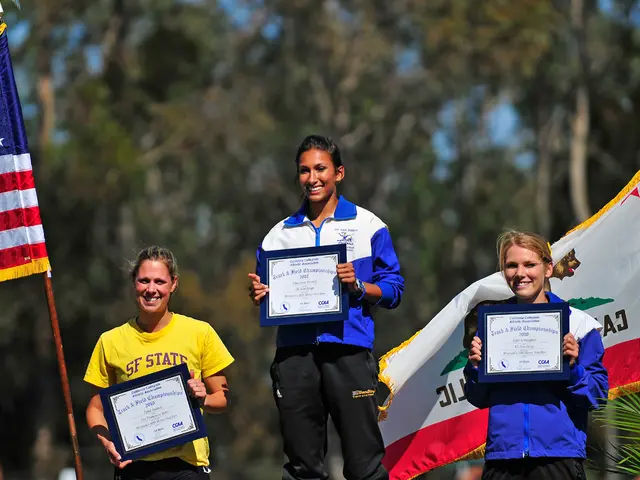Nuclear theorist and Professor Emeritus Earle Lomon passes away at 94 years old.
MIT Physics Professor Earle Lomon Dies at 94
Earl Leonard Lomon, a renowned physicist and former MIT professor emeritus, passed away on March 7 at the age of 94 in Newton, Massachusetts. Lomon, who made significant strides in understanding the forces between protons and neutrons, spent most of his illustrious career at the Center for Theoretical Physics at MIT.
Professor Lomon was primarily interested in the interactions of hadrons, a classification of particles that includes protons, neutrons, mesons, and nuclei. His research focused on these interactions before quarks and gluons were fully understood as their building blocks.
Robert Jaffe, the Jane and Otto Morningstar Professor of Physics at MIT, praised Lomon's contributions. "Earle developed an R-matrix formulation of scattering theory that allowed him to separate known effects at long distance from then-unknown forces at short distances," Jaffe said.
When Quantum Chromodynamics (QCD) emerged as the appropriate field theory of hadrons, Earle swiftly incorporated the effects of quarks and gluons at short distances and high energies. His work can be viewed as a precursor to modern chiral effective field theory, where the essential degrees of freedom at low energy, such as hadrons, are matched smoothly onto the quark and gluon degrees of freedom that dominate at higher energy.
Bruno Coppi, MIT professor emeritus of physics, shared warm sentiments about his late colleague, describing Lomon as a genuinely cosmopolitan scientist due to his open-mindedness and kindness.
Early Life and EducationEarl Lomon was born on November 15, 1930, in Montreal, Quebec. He met his future wife, Ruth Jones, while they were both attending Montreal High School. Their mutual passion for classical music led them to join the school's Classical Music Club. Lomon went on to study at McGill University, where he was a research physicist for the Canada Defense Research Board from 1950 to 1951. After graduating in 1951, he married Jones and pursued his doctorate in theoretical physics at MIT, under the mentorship of Professor Hermann Feshbach.
Lomon spent 1954 to 1955 at the Institute for Theoretical Physics (now the Niels Bohr Institute) in Copenhagen. His time there, with notable physicists such as Niels Bohr, Aage Bohr, Ben Mottelson, and Willem V.R. Malkus, proved to be a pivotal period in his career.
Post doctorate, Lomon held positions at the Laboratory for Nuclear Studies at Cornell University, McGill University, and the Institute of Theoretical Physics in Denmark, the Weizmann Institute of Science in Israel, and Cornell. He joined the MIT faculty in 1960 and retired in 1999.
Los Alamos and Mathematical TheoryFrom 1968 to 2015, Lomon maintained an affiliation with the Los Alamos National Laboratory. During that time, he collaborated extensively with Fred Begay, a Native American nuclear physicist and medicine man. New Mexico became a second home for the Lomon family, and Lomon took pleasure in the area's hiking trails and climbing Baldy Mountain.
Lomon also dedicated energy to developing educational materials for mathematical theory, such as textbooks, educational tools, research, and a problem-solving curriculum for the Unified Science and Mathematics for Elementary Schools. His children recalled reviewing these educational tools with him over dinner. From 2001 to 2013, Lomon served as the program director for mathematical theory for the U.S. National Science Foundation's Theoretical Physics research hub.
Lomon was a Fellow of the American Physical Society and a member of the Canadian Association of Physicists.
Husband of the late Ruth Lomon, he leaves behind daughters Glynis Lomon and Deirdre Lomon, son Dylan Lomon, grandchildren Devin Lomon, Alexia Layne-Lomon, and Benjamin Garner, and six great-grandchildren. A memorial service will be held at a later date, and those wishing to honor Lomon's memory may consider donating to the Los Alamos National Laboratory Foundation.
Lomon's work on hadron interactions before the establishment of the quark and gluon paradigm significantly impacted the development of chiral effective field theory, a modern framework used to describe nuclear forces that align with the symmetries of QCD. His pioneering efforts bridged the gap between practical hadron physics and the more fundamental EFT formulations that are key to modern nuclear and particle physics research.
- Earl Lomon's research, focusing on the interactions of hadrons, paved the way for modern chiral effective field theory, a significant contribution to the development of nuclear forces in the field of physics.
- Before his retirement in 1999, Professor Lomon spent over three decades as a faculty member at MIT, where he carried out groundbreaking research on the interactions of hadrons.
- Beyond his renowned work in physics, Lomon also made lasting contributions to the field of mathematics, developing educational materials such as textbooks, problem-solving curricula, and research tools for elementary schools.
- Lomon was a fellow of the American Physical Society and a member of the Canadian Association of Physicists, acknowledging his accomplishments and influence on the scientific community.
- In addition to his professional achievements, Lomon was also known for his kindness and open-mindedness, earning him the title of a genuinely cosmopolitan scientist.
- During his time at Los Alamos National Laboratory, Lomon collaborated extensively with Fred Begay, a Native American nuclear physicist and medicine man, and grew to love the area's hiking trails and climbing Baldy Mountain.
- The Los Alamos National Laboratory Foundation will be accepting donations in remembrance of Professor Lomon, who left a lasting impact on the scientific community through his research and commitment to education.
- Aside from his academic pursuits, Lomon balanced his career with personal interests including classical music and family, forming a lifelong bond with his wife, Ruth Jones, who was also a fellow music enthusiast.








